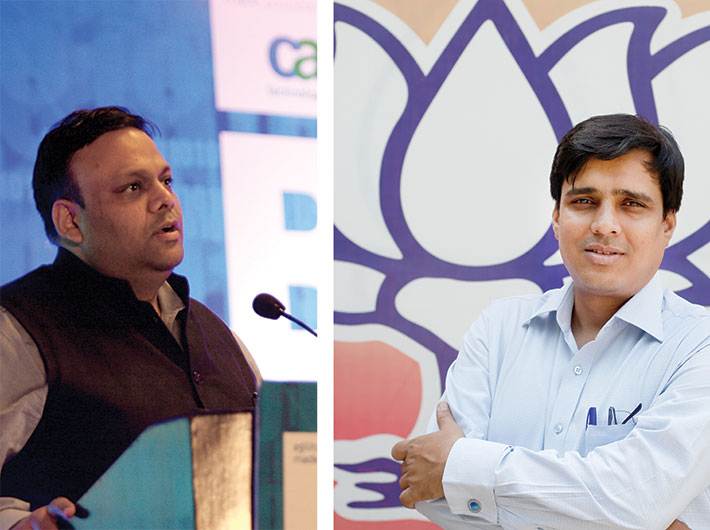BJP’s people-first approach helped it reap benefits of technology – real-time information from ground for better planning, and effective online and door-to-door campaign
With the euphoria of the BJP’s massive victory and Narendra Modi’s swearing in as 15th prime minister now almost over, and the media dissecting all possible data to near death, I decided to dig deep and find out how BJP actually outdid the grand old Congress in all aspects. Was Jairam Ramesh actually right when he said that BJP had out-funded the Congress? Can increase in campaign spend transfer into such a large scale mandate or was there more to it?
Perhaps, Jairam himself had realised the flaw in his earlier comment and rectified the same in an interview with a national daily. Admitting that the BJP had rewritten the rules of the game he said: “The party (Congress) has to be proactive in communication, has to have vastly improved systems of feedback, and be adept at gauging the public sentiment and mood.” Bang on!
So where did Rahul and his team err, or rather what exactly did they not do?
Experts have repeatedly said that the election was fought on two planks – one, on the hope that “achche din aane wale hain (good days are about to come)” and two, on the fear factor on communal lines. However, the difference did not end here. It was just the beginning of the approach.
The other important differentiator was the early understanding within the BJP that the key to success was directly proportionate to the effectiveness of its communication channel till the last mile. The party also realised that for an effective P-2-V (party-to-voter) outreach programme, it was imperative to strengthen the P-2-P (party-to-party) communication. Luckily for the BJP, and unlike its earlier efforts in 2009, the party’s desire to effectively communicate to connect was preceded by the massive strides in another C – the communication technology.
Here, I would also like to add that the massive penetration of mobile connectivity and the associated data access through smartphones also, for the first time, opened up the opportunity for a mass-scale use of social media to connect the dots. It would be important to mention at this point that the party’s information technology (IT) cell was set up in 2006 in Maharashtra by Nitin Gadkari under the mandate from Rajnath Singh, the then president of BJP. However, it came into being at the national level in 2007 when Prodyut Bora was appointed the national convener. Meanwhile, Vinit Goenka was appointed the state convener of the Maharashtra BJP IT in February 2008. While Prodyut went about automating the party using open-source software and advise the party on IT policy issues, Vinit went on to organise the first-of-its-kind live online chat for Gadkari on rediff.com. The same year in April, the party decided to tap the technology tool in a big way and expanded the national IT cell to a seven-member team (today it has four members: Arvind Gupta as convener and three co-conveners, Goenka, Sanjeev Singh and Amresh K).
During the first meeting of the team at the BJP headquarters in Delhi, one person who literally framed the agenda with his presentation and demo and helped shape the IT cell’s mission was Rajiv Pratap Rudy. As a 34-year-old newcomer in 1996, he was the first election candidate in India to use modern database management techniques and survey methodologies to drive his campaign in the remote rural area of Chhapra in north Bihar. ‘The politician with a laptop’ not just made it to the Lok Sabha but also created a process and perfected it over the years. The process and the form created by him have since been adopted by his party and is considered to be among the top 50 election-related processes. He, according to people close to him, intends to apply for a patent of the same.
In the run-up to the 2009 election, Bora designed and launched the campaign website of LK Advani. It soon became one of India’s most visited websites with an average of three million page views per month. Bora was also instrumental in producing BJP’s IT vision document, again a first for any political party. Goenka was instrumental in organising a bloggers’ meet in April 2009. He also set up high definition (HD) video conferencing facilities in 11 districts of Maharashtra for intra-party meetings. This was also the period when the BJP first used Google AdSense to launch a targeted global online advertisement campaign.
The BJP lost the election but continued to strengthen its outreach programmes, technology-driven processes and the team, which finally turned to be one of the key factors that helped the party in 2014. During this period the party set up IT cells in 22 states and four union territories driven by state-level conveners. It also got its IT teams in place across 350 districts, including in Gujarat and Nagpur where the party has IT persons up to the local body level.
The guiding mantra was simple: the party had to put in place people, process and technology – PPT – strictly in that order. And it achieved it. Not that the Congress was far behind. It achieved the same too. However, as in the case of the national e-governance plan (NeGP) championed by its government, the party satraps made the mistake of putting the cart before the horse and completely reversed the order by following the TPP model or technology, process and people route. While in the case of NeGP, the TPP model has led to creation of under-utilised infrastructure due to lack of process re-engineering and people engagement, the Congress canons, during election, failed to fire when it was needed the most.
While the ‘people first’ approach of BJP was aimed at motivating its ground-level workers, it was also aimed at having the party’s eyes and ears exactly where it mattered – to get first-hand information from ground. The information was used effectively by the cadre during door-to-door campaigns. The Congress with its technology-first approach failed to get the ground information and this disconnect further de-motivated its grassroots workers.
A senior BJP functionary told me that the massive work done by the party’s IT cell actually helped national leaders including Modi to directly get in touch with the workers up to the block level. The technology tools, including direct messages on Twitter and Facebook as well as through Whatsapp, made sure that any message conveyed at the national level reached the party workers at the block level in a maximum of three-and-a-half minute. The minimum time taken was 19 seconds!
On the P-2-V front, the BJP IT cell claims that it managed to reach out to as many as 144 million people across India. However, what helped the party on this front was its approach of five ‘I’s: issues, ideology, internet, intensity and interaction. While both technology and non-technology approaches were used to highlight the issues relating to the UPA government, the party also highlighted and attempted to come clean on its ideology front. This helped the party trigger a debate on the communal question and enabled it to push its development agenda. The party was also able to use technology to reach out to people, including party workers, to create awareness about the various successes in BJP-ruled states across India.
All this was achieved through the use of the third ‘I’ or the internet. Technology was also effectively used by the party to achieve the fourth ‘I’ or the intensity of the campaign, which the Congress could not match. The fact that the BJP punchline caught the fancy of even children clearly indicates this. The last ‘I’ was the willingness to interact with and listen to party workers as well as voters. This open interaction channel helped BJP magnify the noise about the UPA’s failed policies, and raised the pitch for “better days” even higher.
Besides internal face-2-face workshops, the party’s IT cell used business intelligence tools to data mine and create focused campaign and noise points. It would be interesting to note that the BJP through its high-tech, social media driven campaign also managed to dilute the impact of the TV news channels. The one-to-many tool, majority of which continued to push things that they thought the nation wanted to know, was completely taken over by the many-to-many tool of social media.
According to a senior party office bearer, what helped the party was its strong cadre management system that was strengthened by the ICT tools. The war, be it on the battle ground or in the political arena, is won by those who are able to understand and predict the condition of wind better. While BJP managed to use technology for analysing and predicting the wind condition better, playing perfect shot to the gallery, the country’s oldest party was completely caught off the guard.
The winner was the public and technology at large.

